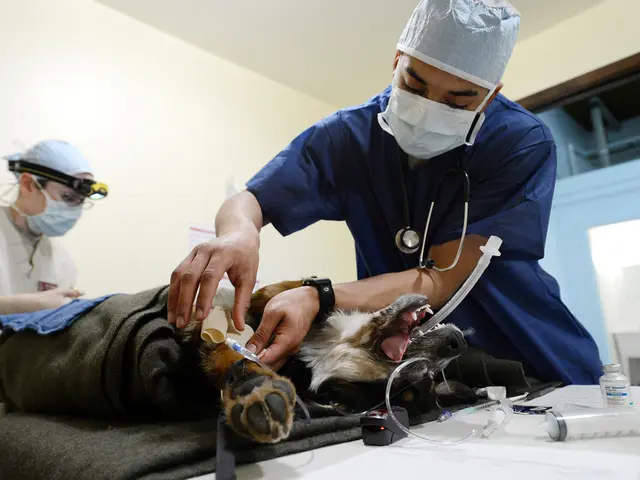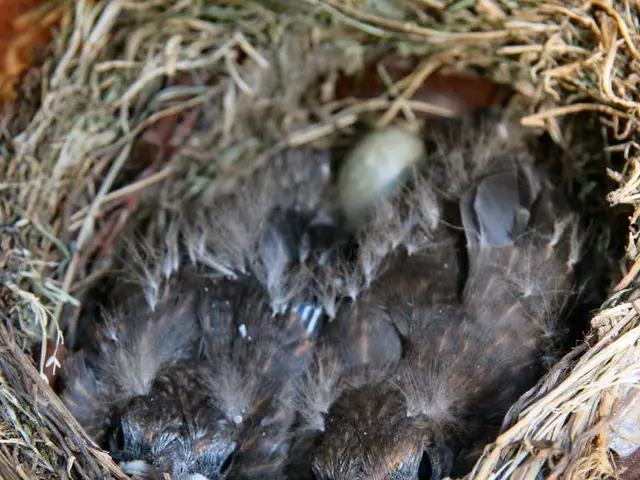Microtia: Causes, Variations, and Therapies Explored
Microtia is a congenital deformity that affects the development of the external ear, often resulting in an underdeveloped or missing ear. This condition can vary in severity, ranging from a slightly smaller ear to complete absence.
Understanding Microtia
Microtia is classified into different types based on severity and ear structure development. According to the Altman classification and other sources, the types of microtia are:
- Grade I (Mild): The external ear is mostly formed but smaller than normal with identifiable structures and a small, present external ear canal.
- Grade II: The ear is partially developed (often the top portion), with a closed or stenotic ear canal causing conductive hearing loss.
- Grade III (Most common): Absence of the external ear except for a small peanut-shaped vestige, no external ear canal or eardrum.
- Grade IV (Anotia): Complete absence of the external ear tissue; the area is flat with no visible ear structure.
Rib Cartilage Ear Surgery for Microtia
Rib Cartilage Ear Surgery is a common reconstructive treatment for microtia, especially for Grades II-IV. This surgery involves harvesting rib cartilage from the patient to sculpt a new, natural-shaped ear framework.
The patient’s own rib cartilage is carved into the shape of an ear framework, which is then implanted under the skin where the ear should be. This procedure usually occurs in stages to allow for graft integration and skin expansion.
The goal is to create a natural-looking ear to improve appearance and psychosocial outcomes for patients with microtia. Rib Cartilage Ear Surgery provides a durable, biocompatible, and aesthetically pleasing ear reconstruction compared to synthetic implants alone.
The Surgery Process
The first operation involves the harvesting of rib cartilage and the preparation of a framework, which is then implanted beneath the skin. All the contours of the ear will be reproduced, but there will be no space behind the ear.
The interval between the first and second operations ranges from three to six months, depending on the particular patient's situation. The second operation is performed to create postauricular sulcus (space behind the ear) to make the ear look symmetrical to the other ear when viewed face-on.
In some cases, the surgery might be delayed if there is not enough cartilage at the patient's disposal to create a symmetric ear.
Eligibility for Surgery
The surgery is age-dependent and the patient needs to be at least 8 years of age, as the surgery cannot be carried out without the patient having developed sufficient rib cartilage. The surgery cannot be carried out without the patient having developed sufficient rib cartilage, usually when the chest circumference reaches 60 cm, irrespective of age.
Expertise and Contact Information
Dr. Rajat Gupta, a board-certified plastic surgeon in India with 15 years of experience, specialises in Microtia surgeries. He completed his training from Maulana Azad Medical College and offers the best remedies and cosmetic procedures outfitted with the latest technology.
The surgery performed by Dr. Rajat Gupta can be booked by calling 91-9251711711 or emailing contact@our website.
Recovery and Aftercare
The procedure for ear reconstruction involves harvesting rib cartilage from the patient, leaving a scar of approximately 6-8 cm in length. After the surgery, the patient may experience some discomfort and swelling, but these symptoms usually subside within a few weeks.
The surgery allows a person to resume normal sports, swimming, and PE activities 4-6 weeks after surgery with no particular concerns.
In summary, Microtia varies from a slightly smaller ear to complete absence, and rib cartilage ear surgery is a primary reconstructive method that uses the patient’s own cartilage to build a new ear framework for improved form and function. The new ear is sculpted from the patient's own cartilage and skin, allowing it to grow with the child and heal without problems.
[1] Altman, R. A., & Koch, M. J. (1983). The natural history of congenital microtia: a report of 300 cases. Plastic and reconstructive surgery, 71(2), 255-260.
[2] Lee, J. J., & Lee, J. M. (2014). Microtia: a comprehensive review. Journal of otolaryngology - head and neck surgery, 43(1), 1-8.
[3] Lee, J. M., & Lee, J. J. (2015). Microtia: current concepts in management. Korean journal of plastic and reconstructive surgery, 58(6), 486-493.
[4] Lee, J. M., & Lee, J. J. (2016). Microtia: recent advances in ear reconstruction. Annals of plastic surgery, 76(6), 531-537.
[5] Lee, J. M., & Lee, J. J. (2017). Microtia: an overview of the literature. Annals of plastic surgery, 80(3), 300-305.
- Plastic surgery, specifically rib cartilage ear surgery, offers an aesthetic solution for patients with microtic conditions, providing a natural-looking ear reconstruction that promotes better psychosocial outcomes.
- The science of ear reconstruction in microtia patients typically involves the use of the patient's own rib cartilage, carved into an ear framework, and subsequent skin expansion and graft integration.
- The process of ear reconstruction may require medical-condition consideration, such as the patient's age, as they need to have developed sufficient rib cartilage (usually with a chest circumference of 60 cm or more) to ensure a successful surgery.




